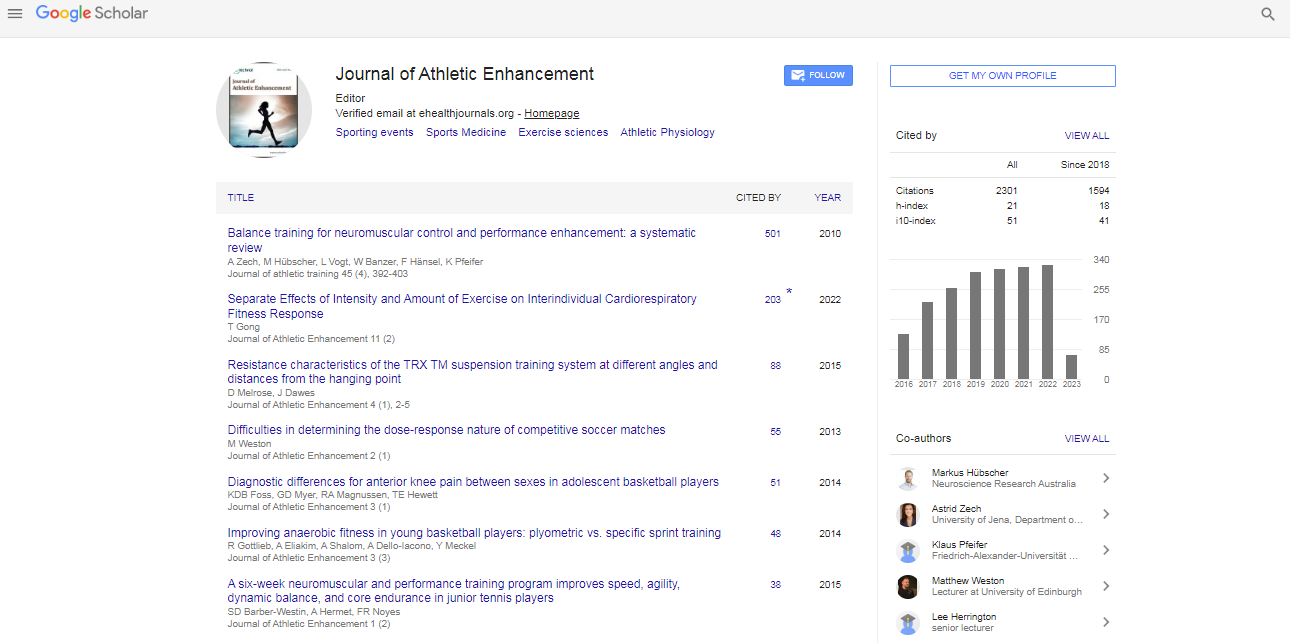Research Article, J Athl Enhanc Vol: 5 Issue: 6
Comparison of Two Modes of Inducing Potentiation of Sprint Cycling Performance
| Blake Carney1, Louise A Kelly1 and Hugh Lamont2* | |
| 1Department of Exercise Science, California Lutheran University, Thousand Oaks, California, USA | |
| 2Department of Kinesiology, recreation, and Sports Science, Costal Carolina University, Conway, South Carolina, USA | |
| Corresponding author : Hugh Lamont Department of Kinesiology recreation, and Sports Science, Costal Carolina University, #3400, 60 W. Olsen Road, Thousand Oaks, California 91360, USA Tel: 001 805-493-3407 Fax: 001 805-493-3860 E-mail: hlamont@callutheran.edu |
|
| Received: July 29, 2016 Accepted: September 26, 2016 Published: October 01, 2016 | |
| Citation: Carney B, Kelly LA, Lamont H (2016) Comparison of Two Modes of Inducing Potentiation of Sprint Cycling Performance. J Athl Enhanc 5:6. doi: 10.4172/2324-9080.1000243 |
Abstract
Background: The use of Post-activation potentiation (PAP) techniques is becoming increasingly popular prior to power-based sports training and competition. A Wingate cycle test is widely used to measure work and power output during short, high-intensity bouts.
Purpose: The purpose of this study was to compare the differences between two conditioning activities (Loaded Counter Movement Vertical jumps vs. Dynamic Mid-Thigh Pulls) upon a 15s Alactic cycle test.
Methods: 11 male subjects (Mean Age=22.3 ± 4.6 years, were utilized in this study, each performed 3, 15 second maximal bouts of exercise on the cycle ergometer, with a relative load of 0.08 kg/kg BW. The order of conditions was randomized, following a mandatory warm up one maximal bout was a control, the others tested possible potentiation following the two separate conditioning activities, Lower extremity plyometrics with 5 sets of 3 maximal explosive bouts with 10% body weight (condition 1) and dynamic mid-thigh pulls with 5 sets of 3 maximal explosive bout with 1.5 times body weight (condition2). 2-ANOVA”s where used to compare between conditions, significance was set at p<0.05.
Results: Both conditioning activities showed significant improvement compared to control for Maximum Power (p<0.05), and condition2 showed a significant improvement compared to control for Relative Peak Power (p<0.05). There were no significant differences seen between the 2 PAP protocols (p>0.05).
Conclusion: Both PAP protocols improved power measured by ALactic cycle test greater than the control. The use of loaded CMVJ’s prior to BMX competition may be a viable practical alternative to DMTCP’s.
 Spanish
Spanish  Chinese
Chinese  Russian
Russian  German
German  French
French  Japanese
Japanese  Portuguese
Portuguese  Hindi
Hindi 
